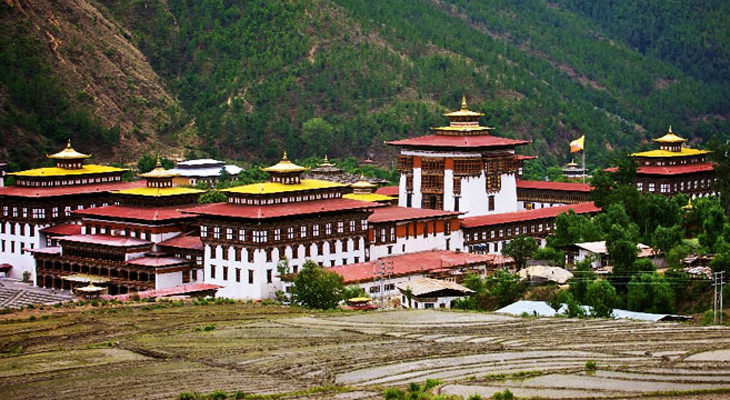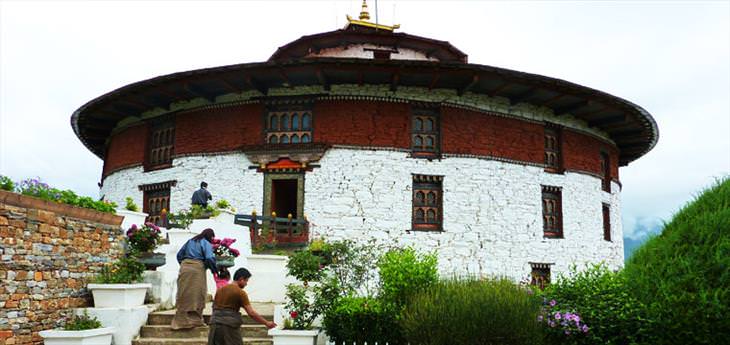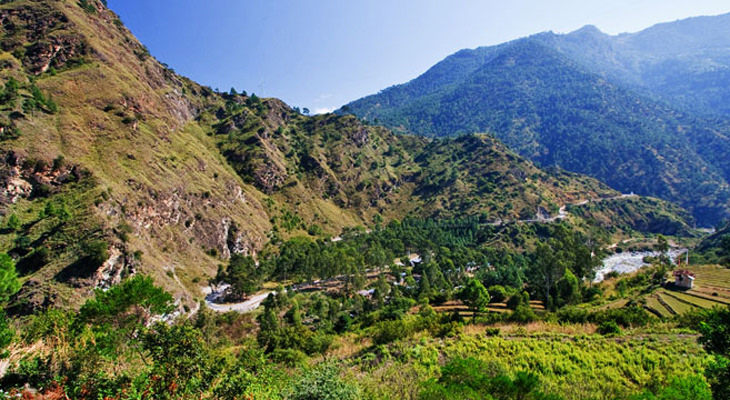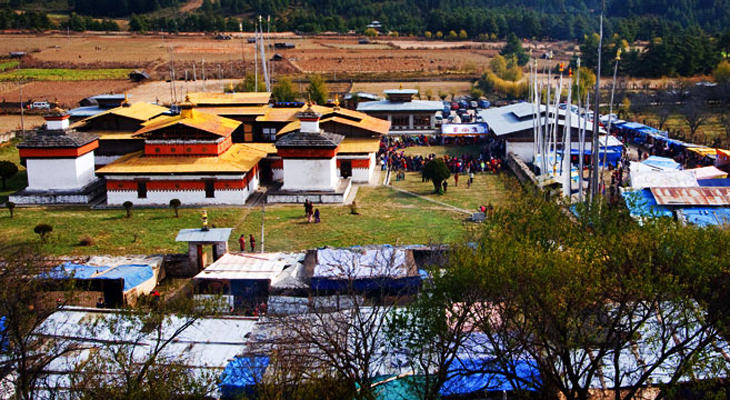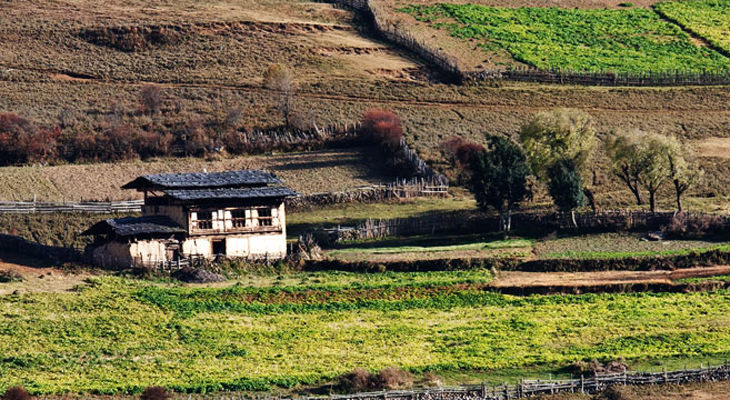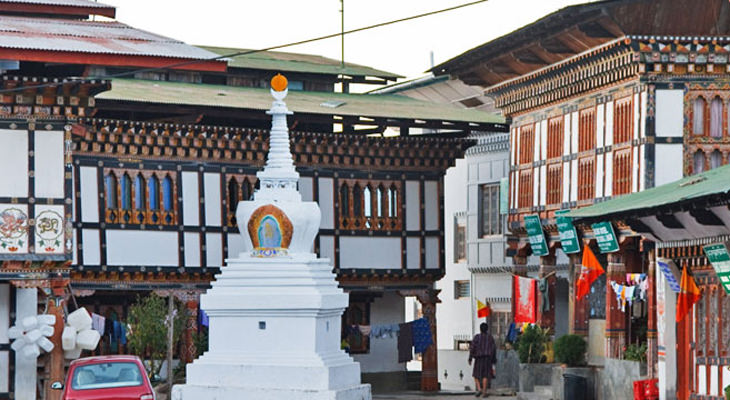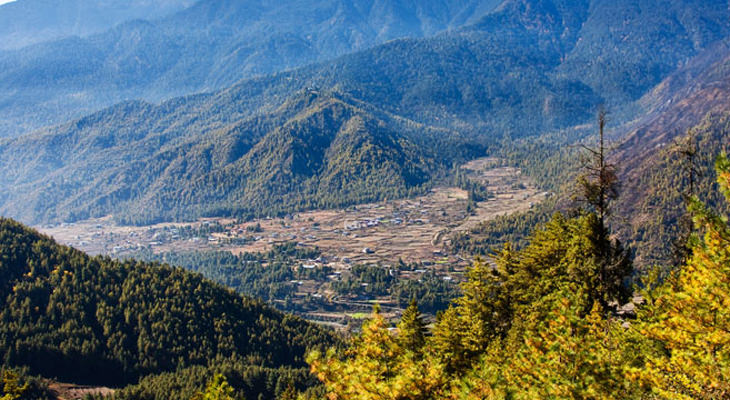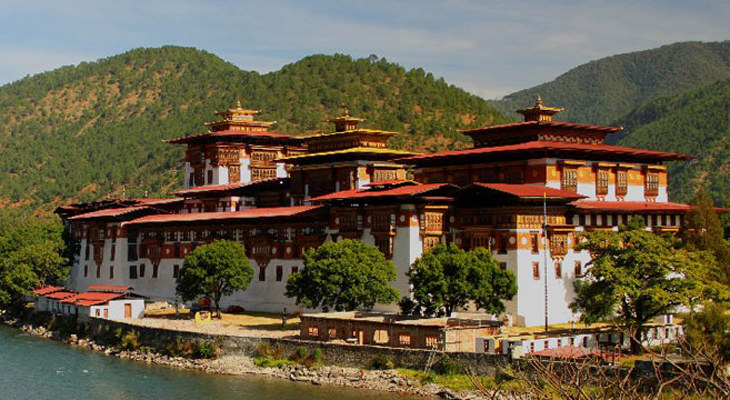10. Taktsang Monastery
Built in 1692, the Takstang Monastery, which is also known as the Tiger’s Nest, is a prominent Himalayan Buddhist sacred site and temple complex that seems to hang off the cliff-side on which it's built. In fact, there are sheer 800-meter drops around its perimeter. Legend has it that Padmasambhava, an 8th Century Indian Buddhist master, meditated at the spot where the monastery was constructed after alighting there on the back of a flying tigress.
9. Thimphu
The Bhutanese capital is nestled in the Himalayas, offering visitors beautiful vistas of the Chuu River that flows through it. It’s the only city in the world that doesn’t have any traffic lights. It’s the perfect place to take in old Bhutanese charm – any modern development in the city is closely monitored and any new buildings can only be built in the traditional style. The Last Shangri-La Tour is a great way to see the city’s top landmark such as Tashiccho Dzong, the Chorten National Memorial, and the Motithang Takin Preserve.
8. Paro
The beautiful valley of Paro is surrounded by lush, green rice fields. The town of the same name is home to many sacred sites and historical buildings. Craggy mountain hills and untouched beauty also abound in Paro. When you’re there, be sure to visit the Rinpung Dzong monastery, which is one of the finest examples of Bhutanese monasteries in existence.
It annually hosts the Paro Tsechu festival, which is the festival of masks. The National Museum of Paro is also worth a visit thanks to its rich stamp collection, slate carvings, Thangka paintings, prehistoric artifacts and traditional weapons.
7. Phuentsholing
Phuentsholing is a pristine rural town with an untouched natural environment. The town is home to Amo Chuu, a crocodile breeding center, and the Chukha hydrothermal project. The latter is an enormous hydroelectric power plant that generates a significant percentage of Bhutan’s revenue. You can also see the Bhutan Gate, which marks the border between Bhutan and India, in the town, as well as the Karbandi Monastery.
6. Bumthang Valley
This valley is Bhutan’s spiritual heartland, bursting at the seams with ancient and precious Buddhist sites. Some of the oldest Buddhist temples in the country are found here. You can use Jakar, the area’s main town, as a base to explore the surrounding undulating terrain, which is filled with apple trees. The area is also notable for its wheat and buckwheat production.
5. The Central Valley
Wangduephodrang marks the last stop on Bhutan’s main highway prior to reaching the center of the country. Located in the south of Punakha, the upper reaches of the Wangduephodrang valley provide rich pastureland for cattle. Fine bamboo products, slate and stone carvings are also produced in this region. The nearby monastery dominates the skyline, and it’s open to visitors in the fall.
4. Mongar and Lhuntse
These two districts of Bhutan are very rural and offer plenty of natural beauty. The journey from Bumthang to Mongar, in particular, is considered to be one of the most beautiful in the entire Himalayan mountain range, crossing the 3,800-meter-high Thrumshing La, the second-highest mountain pass in Bhutan. The Lhuntse district is also the ancestral home of the Bhutanese royal family.
3. Phobjikha and Gangtey Valley
These two glacial valleys are both must-sees. Streams flow through open grasslands for your viewing pleasure, and the area is also home to the endangered black-necked crane. The famous Black Mountain national park is also in the area, and is definitely worth a visit due to its incredible biodiversity. Further places of interest are the Gangtey monastery and the Jigme Singye National Park.
2. Haa Valley
Until very recently, Haa valley was almost completely unknown to outsiders, however, its virgin landscape has seen its popularity with visitors begin to rise. In addition to the stunning scenery, ancient temples and fortresses also abound. Examples of these are the Lhakhang Karpo and Nagpo – the famous White and Black temples in English. You should also check out the Dobji Dzong, a five-story-high fortress built on a hilltop.
1. Punakha
In addition to its staggering natural beauty, the Punakha district was also the setting for some of the most momentous events in Bhutanese history. It’s also the region that’s at the heart of the country’s culture. It ranges from 1,300 meters in elevation at the valley floor, to over 3,000 meters around the Docchula Pass. The city of Punakha itself was actually the Bhutanese capital city until 1955, and it's a must-visit destination should you wish to gain an intrinsic understanding of the country’s history and culture.


